The South and Centre
Our flight to La Palma was unsociably early at 07:30 but we had no trouble getting to the airport and it left on time.
Approaching La Palma just after sunrise with higher areas poking through the cloud cover.
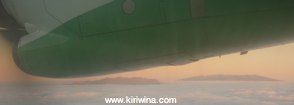
Our plane at La Palma airport situated just south of the capital Santa Cruz.
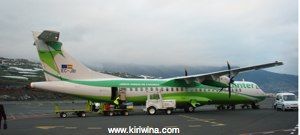
We first went south to Fuencaliente, the area of most recent volcanic activity in 1971.
The wall of tis crater slopes steeply before shallowing as it nears the sea.
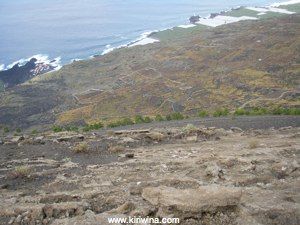
The south west coast of la Palma. A not particularly attractive area as it is disfigured by large scale banana plantations with ugly breeze block wind barriers.
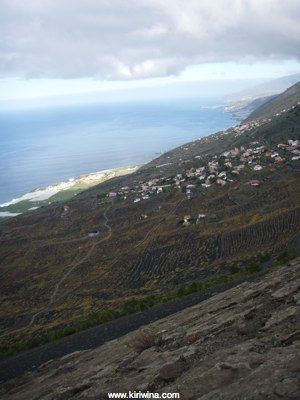
The 1971 volcano.
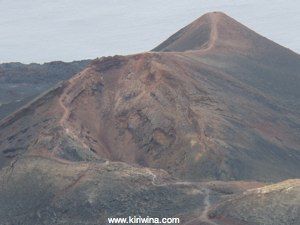
An older volcanic crater. We were not sure whether the pines had seeded naturally.
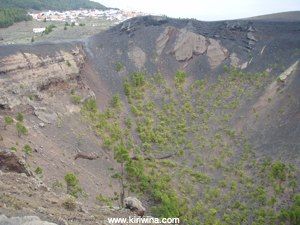
We drove up the west coast to Tazacorte where we had booked a hotel. The hotel Valle Aridane. Cheap and pretty basic but conveniently located near the Caldera de Taburiente national park.
Leaving the hotel we drove up to the park visitor centre near El Paso. Caldera de Taburiente is the largest volcanic crater in the world. The western seaward side is missing and what is left is a huge heavily forested ampitheatre.
It is possible to drive into the park to the Mirador de la Cumbrecita.
Looking south from the Mirador with cloud rolling over the crater edge.
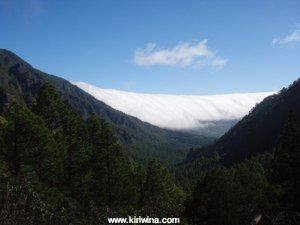
From Mirador de la Cumbrecita there is a wide selection of hiking routes some of which involve overnight stops. We chose a shorter 5 km circuit.
The pines are huge and grow from almost vertical slopes in places. They can grow to 60m in height and live for up to 500 years.
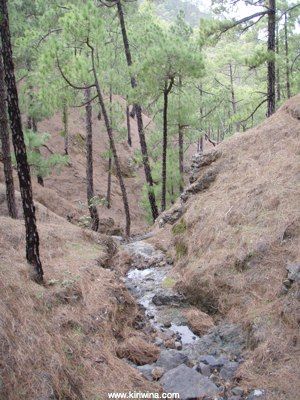
After our hike we drove through a tunnel under the eastern side of Caldera de Taburiente.
Cloud rolling down the slope towards the tunnel entrance.
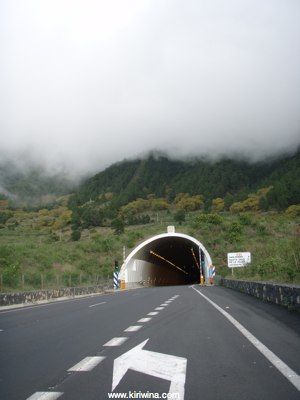
Then we drove down to the coast at Santa Cruz, north for a while and then inland climbing the northern side of Caldera de Taburiente.
As we climbed we rose above the clouds and were presented with a stunning view of Tenerife and El Teide across the clouds.
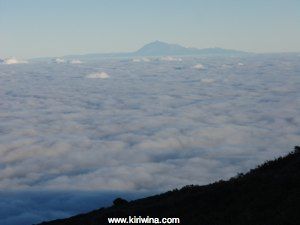
The road continued to climb and it started to get quite cold. We went right up to a lookout near the cluster of Observatorios Astrofisicos. This was the jaw on the floor, wow factor off the scale moment of our visit to the Canaries.
We looked down onto the Caldera de Taburiente partially obscured by cloud and lit by the sun low in the sky to the west. Absolutely breathtaking! A picture can in no way do justice to this immense spectacle. The clouds at centre top were in constant motion as they rolled over the crater edge. We stood and watched for quite a while.
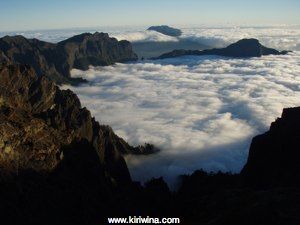
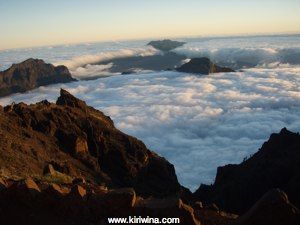
One of the many observatories on La Palma.
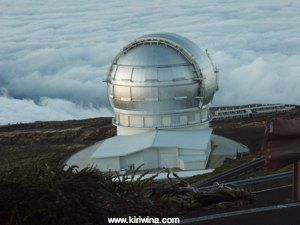
It was getting dark and we were very low on petrol. We coasted virtually all the way down the mountain where we filled up in Puntagorda before returning to our hotel.
Approaching La Palma just after sunrise with higher areas poking through the cloud cover.

Our plane at La Palma airport situated just south of the capital Santa Cruz.

We first went south to Fuencaliente, the area of most recent volcanic activity in 1971.
The wall of tis crater slopes steeply before shallowing as it nears the sea.

The south west coast of la Palma. A not particularly attractive area as it is disfigured by large scale banana plantations with ugly breeze block wind barriers.

The 1971 volcano.

An older volcanic crater. We were not sure whether the pines had seeded naturally.

We drove up the west coast to Tazacorte where we had booked a hotel. The hotel Valle Aridane. Cheap and pretty basic but conveniently located near the Caldera de Taburiente national park.
Leaving the hotel we drove up to the park visitor centre near El Paso. Caldera de Taburiente is the largest volcanic crater in the world. The western seaward side is missing and what is left is a huge heavily forested ampitheatre.
It is possible to drive into the park to the Mirador de la Cumbrecita.
Looking south from the Mirador with cloud rolling over the crater edge.

From Mirador de la Cumbrecita there is a wide selection of hiking routes some of which involve overnight stops. We chose a shorter 5 km circuit.
The pines are huge and grow from almost vertical slopes in places. They can grow to 60m in height and live for up to 500 years.

After our hike we drove through a tunnel under the eastern side of Caldera de Taburiente.
Cloud rolling down the slope towards the tunnel entrance.

Then we drove down to the coast at Santa Cruz, north for a while and then inland climbing the northern side of Caldera de Taburiente.
As we climbed we rose above the clouds and were presented with a stunning view of Tenerife and El Teide across the clouds.

The road continued to climb and it started to get quite cold. We went right up to a lookout near the cluster of Observatorios Astrofisicos. This was the jaw on the floor, wow factor off the scale moment of our visit to the Canaries.
We looked down onto the Caldera de Taburiente partially obscured by cloud and lit by the sun low in the sky to the west. Absolutely breathtaking! A picture can in no way do justice to this immense spectacle. The clouds at centre top were in constant motion as they rolled over the crater edge. We stood and watched for quite a while.


One of the many observatories on La Palma.

It was getting dark and we were very low on petrol. We coasted virtually all the way down the mountain where we filled up in Puntagorda before returning to our hotel.
